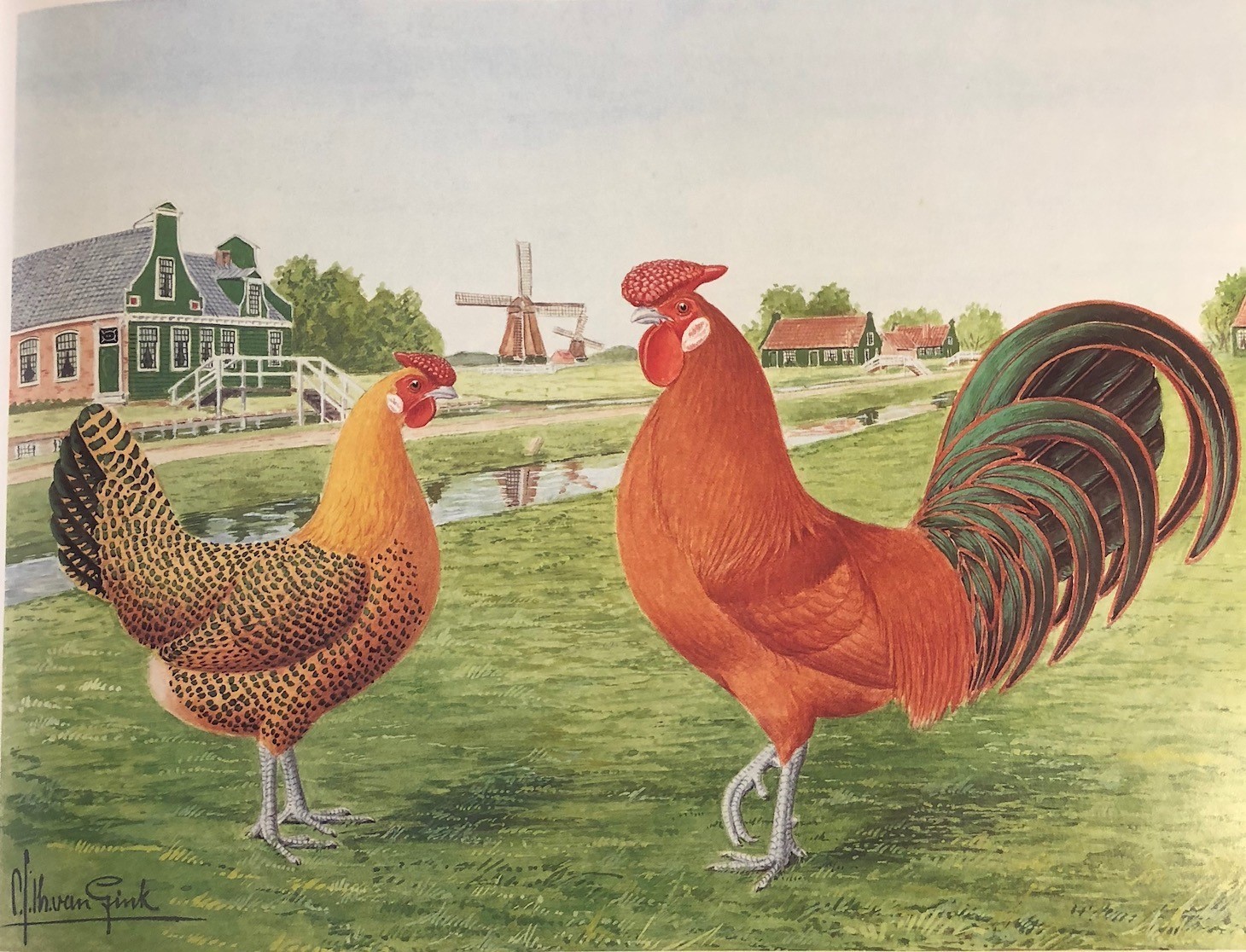The chicken and the egg: the David Scrivener Collection

Which came first?
Discover all things poultry, chickens and eggs in our new Staircase Hall exhibition celebrating the completion of the cataloguing of the David Scrivener Collection: The chicken and the egg, from 12th November 2018.
Written by Claudia Ricci, Project Cataloguer.
Thanks to the generous support of The Poultry Club of Great Britain we have acquired and catalogued the unique collection of books and archival materials gathered by the author and poultry show judge David Scrivener (1952-2015).
The Poultry Club of Great Britain (PCGB) was founded in 1877 at the Crystal Palace Show. It is, in Scrivener’s own words:
“the body governing the fancy”
PCGB’s main function is to safeguard and preserve poultry standards in the UK. It also administers the judges’ exams, issues leg rings, organises the National Show and generally represents the hobby to the outside world.
Thanks to Scrivener’s donation we now hold some of the most comprehensive collections of the PCGB’s Newsletter (1973-2014), its Yearbook (1923-2014, with gaps), the Poultry World Annual (1913-1932) and the catalogues/schedules of the National Poultry Show (1945-1961, 1973-2014).
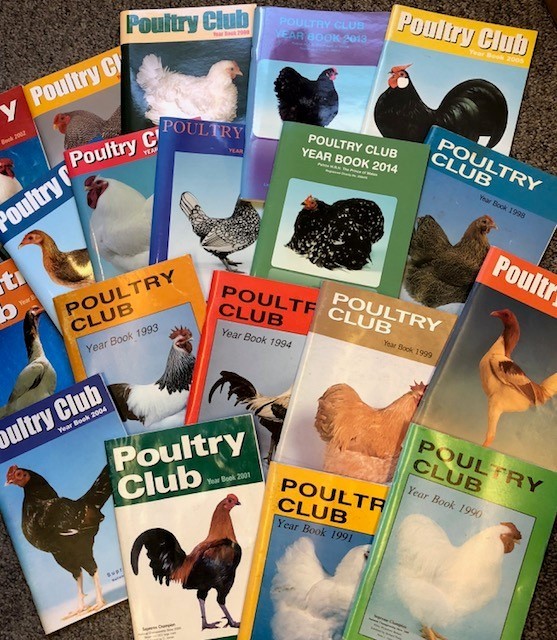
About David Scrivener
Scrivener was a keen poultry breeder, or “fancier”. He concentrated on large and bantam Spanish, became a “Panel A” Show Judge (the highest level awarded by the PCGB) and the Chairman of the Rare Poultry Society. Author of several books on poultry breeds and poultry illustrations, Scrivener also wrote a regular column on poultry breeding for ‘Country Smallholding’. All of these titles can be found on the shelves of the MERL library.
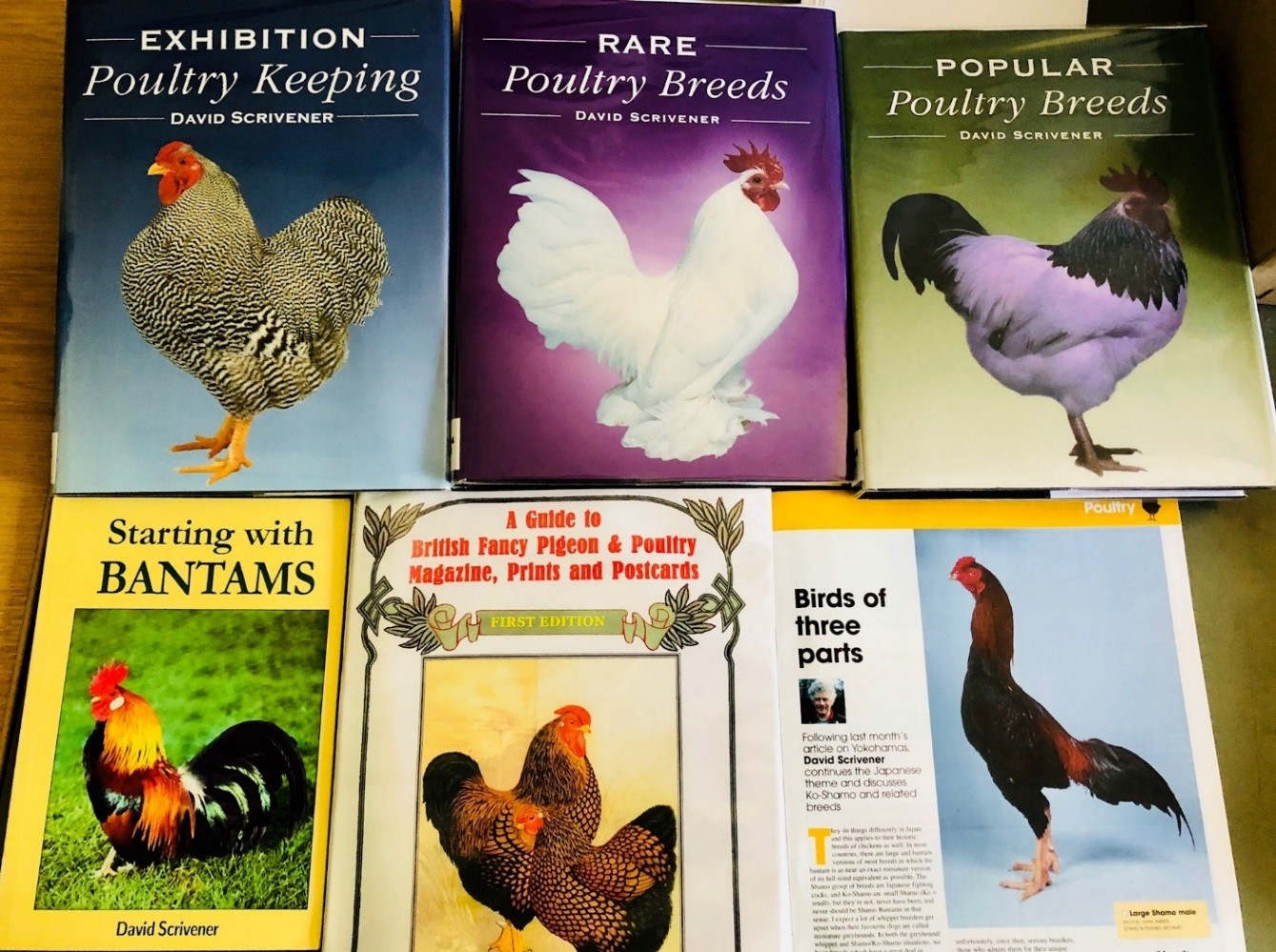
The printed collection includes a huge range of material: from an album of Dutch cigarette cards to glossy contemporary magazines, to rare nineteenth century first editions, to MAFF pamphlets, to old Victorian postcards and the latest self-help guides on how to start off with chickens.
Library
Of the 200+ titles that we incorporated into the existing poultry collections held at the MERL library, 33 were journal titles, some of which are extremely rare, as their publication was often short-lived and their circulation presumably limited, e.g. Poultry news (Leicester, 1921-1925), Poultry and poultry husbandry (London, 1929-1931). The better established journals have more substantial runs, such as The feathered world (1892-1936), The poultry world (1918-2004, complementing our existing holdings) and Fancy fowl (1981-2010).
Archive
In addition to his extensive library, Scrivener also developed a diverse archive, including slides, postcards and illustrations. These have been catalogued separately as the David Scrivener Collection, under the broad reference D DS. Many of the slides are studio shots featuring best of breeds, for inclusion in his various publications, plus some photographs of chickens in their outdoor homes. The postcards are brilliantly varied, and include collector’s sets published across Europe, many featuring breed examples. In addition, the collection encompasses postcards used to advertise related products, various humorous cartoons and more general rural scenes.
The illustrations (like the postcards) are varied in their publication dates, and feature many images from the early twentieth century. Examples from the archive were displayed at the 2016 National Championship Poultry Show at Telford, and generated much interest as the collection documents what was considered the ideal for each breed throughout the last century.
Objects
The David Scrivener collection also contains artefacts that have been accessioned into the MERL object collection. These include some of Scrivener’s prize-winning rosettes awarded by local and national poultry clubs in a variety of categories, a box of three Victory jigsaw puzzles depicting poultry; a turkey, chickens and ducks showing Scrivener’s interest in depictions of fowls in popular culture, and a metal sign advertising ‘Golden Lay’ eggs.
David Scrivener’s love for poultry-themed art and artistic illustrations of fowls is evident in his own writings as well as in his private collections. In Popular poultry breeds (2009) Scrivener explains the reason behind his passion for poultry art:
“the artists Cornelis van Gink, J.W. Ludlow and others, depicted idealized versions of the breeds in their paintings and prints, and these became templates that breeders tried to make a living reality.”
Initially art was attempting to imitate reality, but, ironically, it ended up influencing the standards that were adopted by breeders of later generations in their effort to preserve and resurrect the standards of the past.
Scrivener was actively involved in this rediscovery of the past, particularly the ‘golden age’ of fancy livestock breeding and showing (as the last quarter of the nineteenth century is often referred to), and the preservation of rare breeds of fowls. As a show judge he must have worried about breeding standards becoming diluted and corrupted and his collection of books, which are full of pencil annotations and paper notes, clearly demonstrate his constant desire to keep those standards alive, particularly for the rarest and least well-known breeds of poultry.
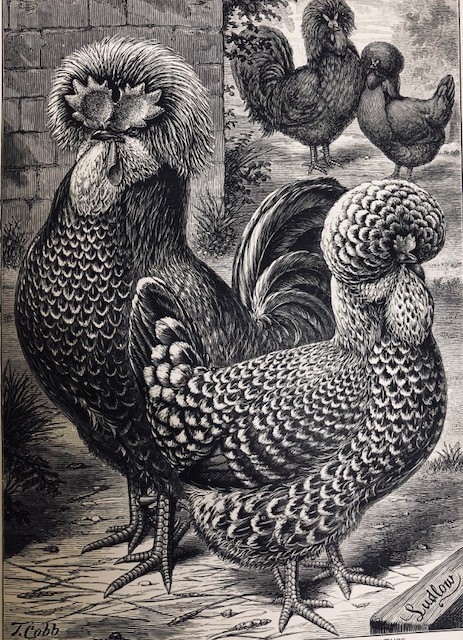
Building up a collection
We can speculate as to how David Scrivener acquired the items in his collection: some serials and yearbooks were probably obtained through the connections with clubs and associations he knew, both in Britain and abroad, some books were bought from specialist booksellers such as Veronica Mayhew, and others may have been purchased on the antiquarian book market.
His collection included a copy of the marvellous Beeton’s book of birds (ca. 1862), a rare copy of The illustrated book of domestic poultry edited by Martin Doyle (1857), various editions of Lewis Wright’s Book of poultry, the ‘Bible’ of poultry keeping, including the 1888 popular edition and the 1902 illustrated edition.
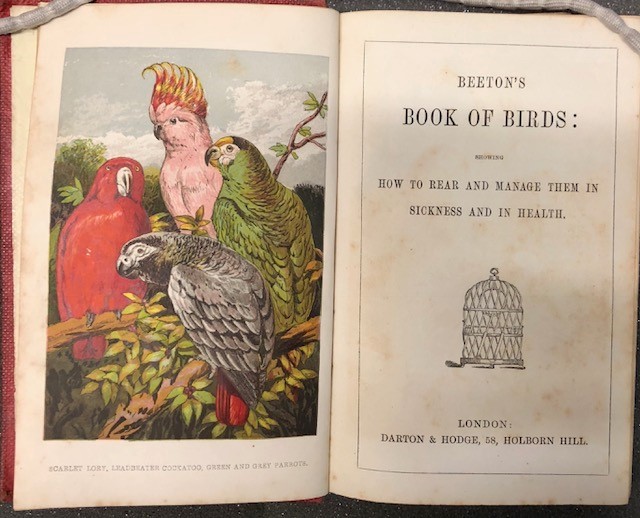
David Scrivener was not just an unparalleled expert in his subject, an avid collector of books, prints, and slides, an author and historian, he was also a promoter of poultry keeping among the younger generations and across various countries (his collection shows he had links with like-minded aficionados in Germany, the Netherlands, New Zealand and the USA) and left a significant contribution towards the preservation of knowledge that is at risk of disappearing.
The MERL would like to continue on his footsteps by making his collections accessible to researchers and other interest groups.
